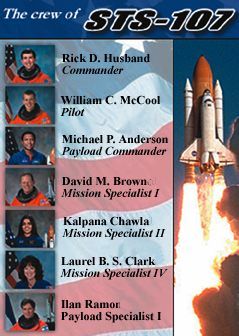Investigation focuses on problem with foam insulation at launch
- February 7, 2003
- |
- Stephen Yeargin, Technical Editor
- Section: Cover
A piece of foam insulation that ripped from the external fuel tank during liftoff may have damaged the tiles that protect Columbia from the extreme heat of re-entry.
NASA engineers spotted the peeling fuel tank insulation on high speed cameras that recorded the launch of Columbia. This insulation collided with the underside of the shuttle’s left wing, possibly knocking off the heat-resistant tiles, NASA officials said.
A memo recoverd by NBC’s Jay Barbree indicates that NASA was aware of damage to the wing days after the launch. The surface area could have been as much as seven by 30 inches. Although the effects of the incident were studied extensively while the shuttle was still aloft, it was not deemed a safety concern, as engineers have reported similar incidents had occured before.
James Oberg, an author and former flight controller, said that he has recieved several e-mails suggesting a highly unlikey “Armagedon-like” rescue mission.
In the event that enough tiles are not in place during re-entry, the shuttle fuselage could become exposed to the 2,300 degree temperatures caused by the friction of entering the earth’s atmosphere.
Temperature measurements from devices on board the Columbia indicated a sharp temperature increase on the left wheel well and fuselage, the same side of the vehicle struck by the insulation.
The uncharacteristically high temperature readings were first dismissed by engineers as erroneous data by mission control for later review, according to a report released by NASA on Sunday.
The last communication with the crew concerned the sudden spike in temperature in the left wheel well, a likely side effect to the extreme heat.
President Bush is expected to include moderate increases in NASA’s overall budget and shuttle program in his $2.23 trillion budget proposal this week, according to reports from the White House.
The crew on board the International Space Station was informed of the loss of Columbia and its crew about an hour after the accident, according to a NASA press release.
